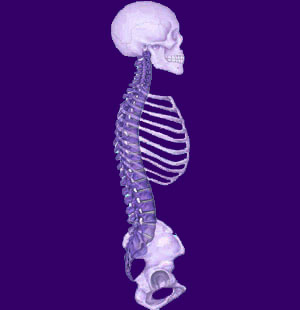
There is a perfectly matched pair of longitudinal ligaments in each spinal anatomy. They consist of the posterior ligament and the anterior ligament. Together, these strong, fibrous tissues help to regulate the movement of the vertebral column, preventing it from overextending or over-flexing. They also provide form and stability to the vertebral column, keeping all the components tightly held together. Both of these ligaments can suffer damage, degeneration, hypertrophy and ossification. However, conditions that affect the posterior ligament are usually deemed far more serious, since this is the tissue that provides the frontal border to the central spinal canal. Meanwhile, conditions that affect the anterior ligament do not usually affect the neurological functionality of the spine in any way.
This essay examines these crucial ligamentous tissues which are so important to the overall functionality and stability of our spinal columns.
What are the 2 Longitudinal Ligaments?
The name of these structures refers to longitude, meaning that they traverse the body from top to bottom, rather than left to right.
The posterior ligament begins at the axis vertebrae in the upper cervical spine and extends all the way down to the sacrum. The posterior ligament is located inside the vertebral bodies, on the anterior face of the central neurological canal space. This posterior ligament regulates the flexion of the spine and helps to provide stability for the posterior of the vertebral bodies and intervertebral discs.
The anterior ligament is a multi-layered tissue that begins at the axis and continues to traverse the length of the spine, until the top of the sacral region. The anterior ligamentous structure is located on the frontal surface of the vertebral column and does not border the neurological canal. This anterior ligament regulates the extension of the spine and helps to provide stability for the anterior side of the vertebral bodies, as well as for the intervertebral discs.
Longitudinal Ligaments Causing Back or Neck Pain
As previously mentioned, these ligamentous tissues can suffer injury, degenerative laxity, hypertrophy and ossification. All these scenarios might be implicated in causing or contributing to a back or neck pain syndrome.
Injury will usually be caused by trauma or drastic overuse. Trauma to the spinal ligaments can elicit pain upon specific or general movements in particular areas of the spine.
Degeneration can cause increased laxity or tension in the spinal ligaments. While usually not overly problematic, decreased range of motion might cause physical limitations, while increased range of motion might result in spinal injury or instability.
Hypertrophy means inflammation and both ligaments can increase in thickness due to various causative mechanisms.
Ossification means to change from soft tissue to bone. This process can also affect either the posterior or the anterior ligament.
Both inflammation and ossification of the anterior ligament rarely results in any symptoms or serious functional problems for the patient. In extremely uncommon circumstances, these processes might be implicated in contributing to some form of degenerative back or neck condition, but these cases are very rare.
However, ossification or hypertrophy of the posterior ligament can be highly problematic and is a primary cause of central spinal stenosis in many patients. This is particularly true in the cervical region, although some cases of upper thoracic stenosis are also deemed to be enacted by posterior ligamentous issues. Meanwhile, posterior ligament ossification in the lumbar spine is seldom seen and even less often causes any symptomatic expression.
Understanding the Spinal Ligaments
Ligamentous tissues are strong fibrous connectors that help to support the spine and prevent too much motion in a given direction. These 2 specialized spinal ligaments work together, and with other types of connective tissues, to provide amazing support for our vertebral columns, despite a huge and diverse range of movement.
It is vital to remember that just because a ligament is affected by some abnormal structural condition, does not mean that pain or neurological dysfunction will ever occur. Statistics clearly show that most ligamentous issues are asymptomatic and will not cause pain now or in the future.
However, osseous and hypertrophic concerns affecting the posterior ligament should always be monitored by a qualified neurology professional, in order to make sure that the spinal cord does not suffer any ill effects, such as compression or hemorrhage due to canal impingement.





